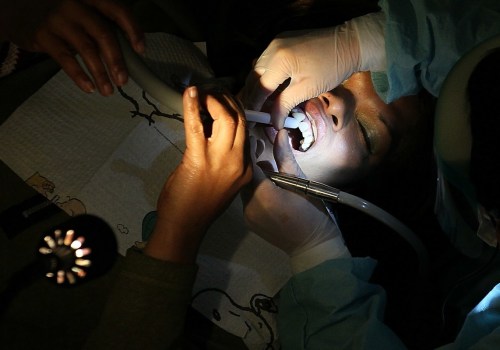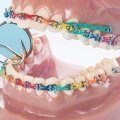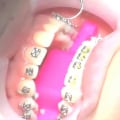Orthodontic treatment helps to ensure the proper functioning of the teeth and to create healthy smiles. A good bite makes it easier to bite, chew and talk. Misaligned teeth are more difficult to clean and can cause abnormal wear of tooth enamel, which can lead to extensive and expensive dental procedures. An orthodontist is a dentist trained to diagnose, prevent, and treat tooth and jaw irregularities.
They correct existing conditions and are trained to identify problems that may arise in the future. Orthodontists work with people of all ages, from children to adults. Orthodontic treatment does more than move your teeth in a straight line. While one of the benefits of braces is undoubtedly having nicer teeth, orthodontists are trained to detect and correct complex bite and jaw problems that are normally beyond the skill level of general dentists.
An orthodontist is an expert in diagnosing, preventing, and treating dental and facial irregularities or “malocclusions” (a fancy term for bite problems). An orthodontist receives special training to repair misaligned teeth. If a dentist refers you to an orthodontist, the inference is that your teeth aren't quite right. It's no big deal at all.
You will likely receive a recommendation about braces or some other method for straightening your teeth. The orthodontist is the person who does this work. Orthodontists are dental specialists trained in the prevention, diagnosis and treatment of dental and facial irregularities. They offer a wide range of treatment options to straighten crooked teeth, correct bad bites and align the jaws correctly.
Indeed, an orthodontist is a dentist with almost twice as much training, most of them specialized in the field of teeth straightening. While a referral from a dentist isn't required for an orthodontist to see you, it may be a good idea to first see your family dentist for a checkup and request a referral to a specialized orthodontist with whom you already have a working relationship. Orthodontists use fixed and removable dental devices, such as braces, retainers, and bands, to change the position of the teeth in the mouth. Orthodontists also often pursue a pre-dental or pre-medical specialization in their undergraduate degree before entering dental school.
If you wear braces to straighten your teeth or correct another dental problem, your orthodontist may place molar bands on your back teeth. After finishing dental school and taking the certification exam, orthodontists attend an orthodontic residency program for an additional 2 or 3 years to obtain a specialty certification in orthodontics. Orthodontists are dentists who have received additional training to specialize in treating misaligned teeth and jaws. If you're wondering what an orthodontist can do for your smile, you should schedule an appointment to have you evaluated, without a referral.
According to the American Board of Orthodontics, orthodontists can start practicing after completing additional certification tests. Orthodontists continue their studies for two or three years after dental school and dedicate thousands of hours to specific classes on malocclusions, bone growth problems, jaw problems, craniofacial anatomy, biomechanics and more. Most dental schools require another two or three years of training before a student qualifies as an orthodontist. Most of all, a big smile from the orthodontist can increase confidence, good humor, and pride in your appearance.
While you should see your general dentist twice a year for checkups, your orthodontist is a specialist who provides an extra level of care that makes your smile even better. If you visit an orthodontist, you should be confident that you are seeing a qualified professional. However, as a last option, the receptionist at your orthodontist's office can help if you're still unsure. Some of the orthodontist's advanced training includes a variety of studies, including genetics, human growth and development, oral biology, and biomechanics.
.






